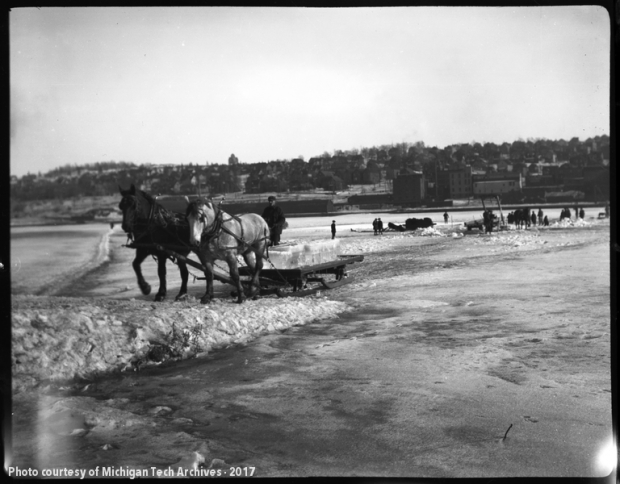
Flashback Friday takes us back to a winter tradition oft forgotten; the annual ice harvest.
In frozen waters across the Great Lakes region, the new year took commercial fishermen and local folks to the shoreline to harvest “ice cakes.” Townsfolk up and down the coasts of Lake Superior and inland lakes in the Upper Peninsula set up working crews to help fill up the community ice houses. Ice was meticulously selected, cut into sheets, and the frozen slabs were hauled and stacked inside the ice houses. The precious blocks were packed in sawdust to preserve their form as long as possible throughout the year. The community ice house supplied businesses and homes in the bygone era before modern refrigerators were common!

In areas downstate, the ice harvest typically started in January or February. In the Upper Peninsula, March was the most popular month for the harvest. Handsaws, and later gas circular saws, tore into the ice to shape each slab and prepare it for the delivery sleigh. Actual horsepower pulled the sleighs filled with ice to the storage place in the early years, and later the sleighs were replaced by trucks.

Ice was an essential part of community life, not just for local businesses and families to keep food and goods cool, but also for packing and shipping. Ice was an essential element of successful commercial fishing outfits, as smaller blocks were needed to safely pack fresh fish for delivery across the region.
The lead photograph in this post shows the ice team ready to make delivery to the ice house during this month in 1902. This image is courtesy of the Reeder Photograph Collection.